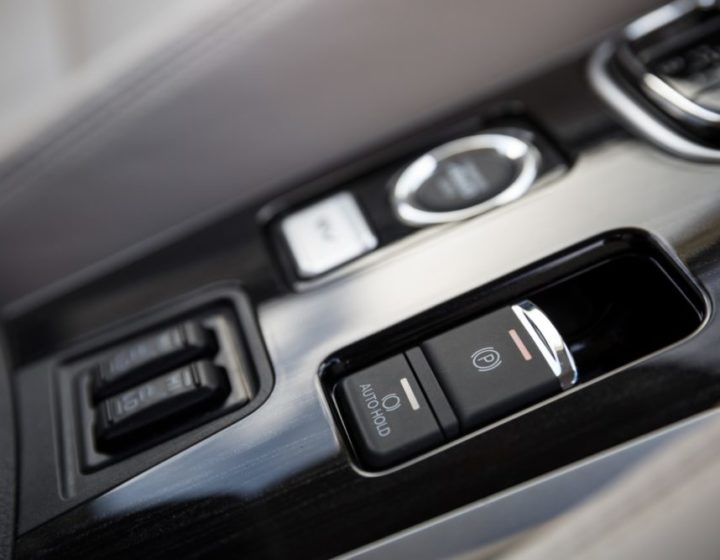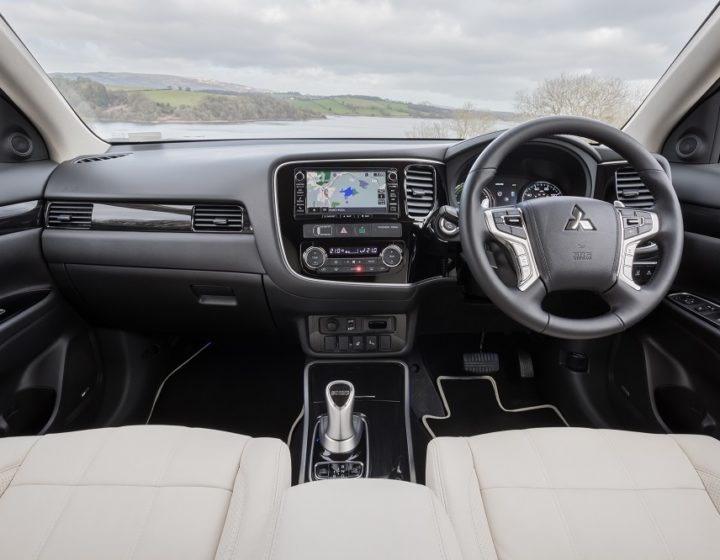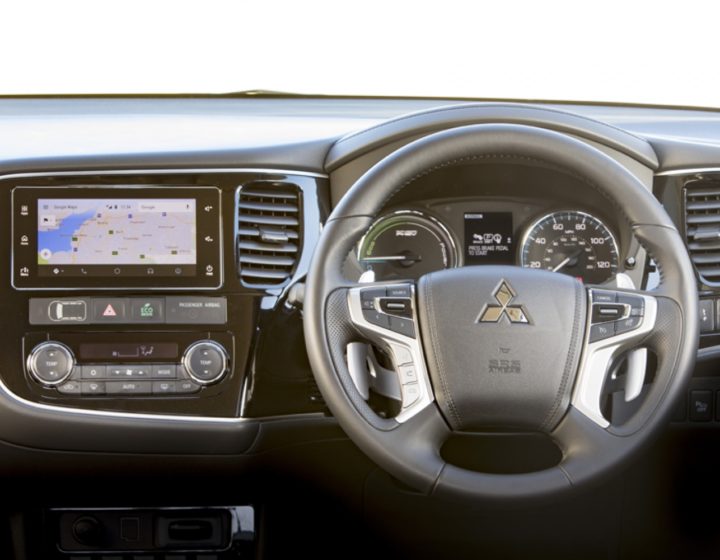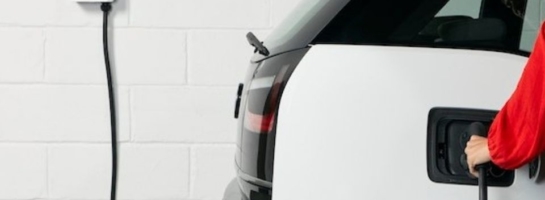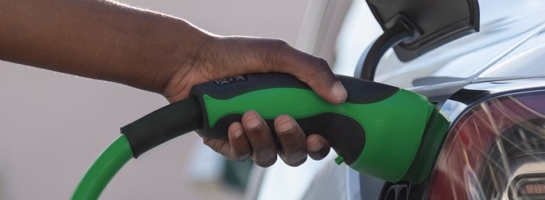Review: Mitsubishi Outlander PHEV (2015 – 2017)
It would be a crime to say my journey into the driver’s seat of a PHEV was on purpose. A lifelong petrol head, a desirer of speed craving the roar of an engine burning the fossils of giants that once walked this earth – would be how my friends would describe me. Okay, perhaps not in such drastic terms but nonetheless – a petrol head.
So, finding myself in the cockpit of a Mitsubishi Outlander PHEV with an ear-to-ear grin on my face whilst taking the scenic route to work isn’t something I would have expected.
Interior
As a daily driver of a ’05 plate Citroen C5 and a ’06 MK2 Focus ST as a weekend toy – it wouldn’t take much on an interior for me to feel as if I’ve stepped into a Rolls Royce.
That being said, the interior of the Outlander is truly a nice place to be. It finds itself comfortably balancing between luxurious and practical. There are of course many similar cars that have more desirable interiors, but when you compare the cost of the Outlander to them – it can’t really be beaten.
The model I’ve been driving is top of the range, giving me comfortable electronically-adjusted heated leather seats, leather steering wheel, electronic handbrake, touchscreen infotainment unit including Sat Nav – and so much more.
Storage space at the front is quite impressive. Both doors have good-sized pockets as well as two cupholders in the middle, an impressively large glovebox as well as a storage compartment in the leather-topped armrest.
Up top there’s a decent sized sunroof, however for the tall among us, it’s very easy for the sun to blind you if you’re sitting too far back. It feels weird to say that the sunroof is a little far forward, but it really is.
Finally, at the back are three seats with plenty of leg room even behind the tallest passenger and a 463-litre boot.
Exterior
Looking at the car from the outside almost makes it difficult to believe that the interior is as nice as it is. Whilst I find it a nice-looking SUV – it’s exactly that. It’s just a nice-looking SUV – not amazing, not a super cool car. But a nice-looking SUV.
The front is somewhat mean looking, with its large grill and stylish LED lights but the rest of the car is somewhat uninspiring. And I think that does the car some favours.
The Outlander is aimed at being an affordable PHEV SUV that doesn’t ask for much. So its somewhat bland exterior is forgotten once you step inside and experience the enjoyable interior, its high-spec equipment and well-engineered performance.
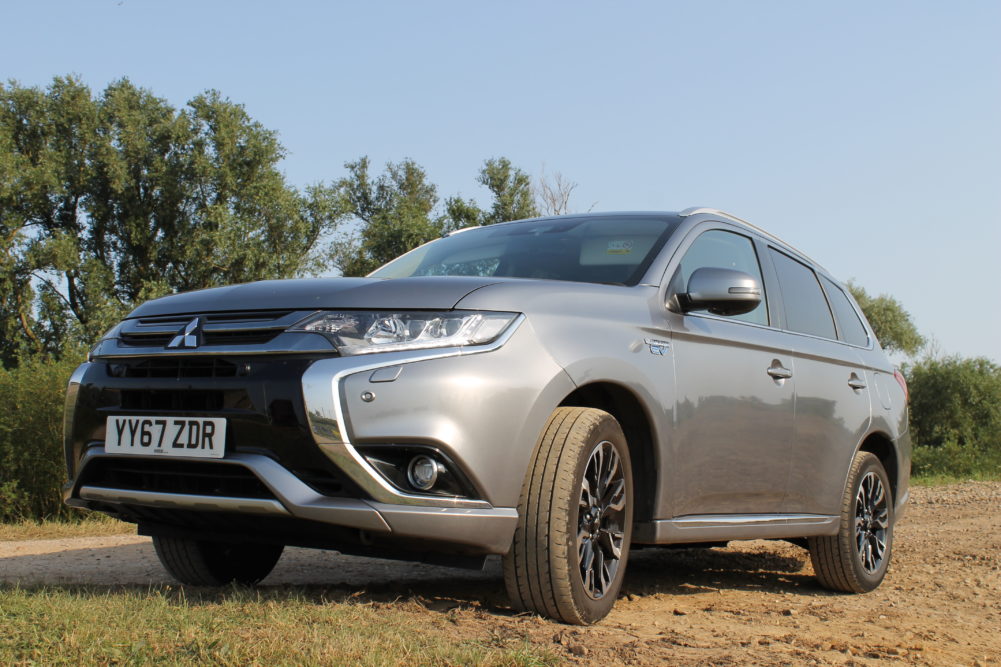

Performance
As already mentioned, I’m into my cars so it isn’t a surprise to me to find out that a PHEV or electric car can shift. Regardless of me being prepared to expect a decent level of straight-line performance from the Outlander – I was still surprised.
The 12kWh battery complements the 2.0 petrol engine nicely, providing plenty of torque where needed but also able to deliver an impressive average weighted fuel consumption of 166 mpg.
Three modes are available: EV, series hybrid, and parallel hybrid.
EV Drive mode is the all-electric function, where the battery drives the front and rear motors. This provides an eerily quiet drive as well as a range of up to 33 miles. However, that range will entirely depend on the weather and driving style. I managed 24 miles in EV mode, driving “sensibly” and that was on a mix of A and B roads.
Series Hybrid mode is where the petrol engine acts as a generator for the electric motors, this will kick in when extra power is needed such as overtaking or climbing a steep hill. It will also kick in when the battery charge level falls below a certain threshold.
Finally, the Parallel hybrid mode is where the petrol engine powers the majority of the power and the electric motors chip in where a little more power is required.
So, what does this all actually mean? Never did I think it would be me sat here typing out all the different types of driving mode for a car in a review and not just saying the part that everyone cares about – the 0-62.mph time. It’s 11 seconds.
For the size of the car, 11 seconds does in fact feel quite impressive. For someone who owns a modified car that can do it in just under 5.5 seconds – I certainly don’t feel as if the Outlander is slow, by any means.
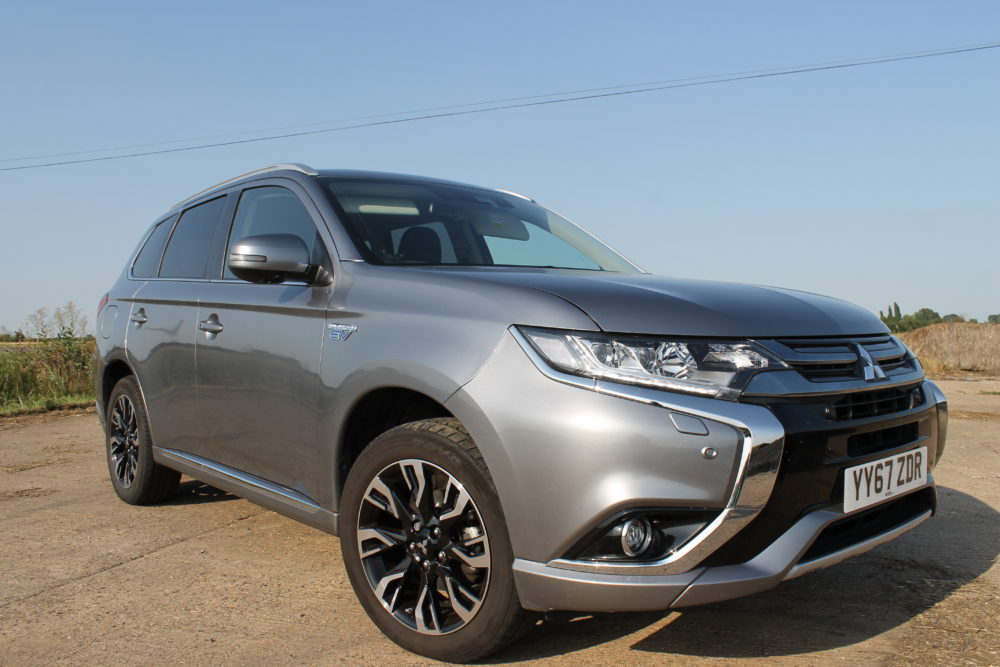

Handling
I’ll be upfront and admit that I haven’t driven many SUVs. I guess the only cars I can put on that list are a 2008 Nissan Qasqhai and a 2005 Chrysler Grand Voyager – so I can’t go on and compare the outlander to other SUVs.
The handling is better than I expected. The suspension is quite stiff which helps the Outlander navigate corners with what feels like minimal effort.
As you’d expect, it’s quite heavy, weighing in at 1,880kg but there’s not as much body roll as you would expect there to be, meaning the car doesn’t feel as heavy as it is.
Feedback from the wheels to the steering wheel is good, far too many modern cars lose that “feel” but I don’t get that from the Outlander.
The electric part
Being my first plug-in car, I hadn’t yet experienced the process of pulling up at a charge point and plugging it in. I’ll admit that I was a little bit nervous, I have an okay knowledge of EV chargers and what the difference between a 3kw charger and a 7kw charger is – but I’d never actually used one.
I parked up at a local supermarket that offers free charging. I then moved the car and parked again as I realised, I was the wrong side of the charger and my EV cable wouldn’t reach! I had already downloaded the correct app for the charger, plugged it in, pressed a button and the car was charging. Incredibly simple.
Three hours got me a full charge which I then used on my journey home.
Driving in EV mode is a very odd experience at first, and the Outlander has great sound proofing meaning the inside is dead quiet. From the outside, all you really hear is a whooooosh as it drives past. It really is true that you should be extra cautious of pedestrians in car parks. They will not hear you coming.
A great feature that I haven’t yet mentioned is the Save button. Pressing this button will tell the car you want to save your electric charge. A clever use for this is saving the battery for city driving, rather than using it at 70mph on the motorway.
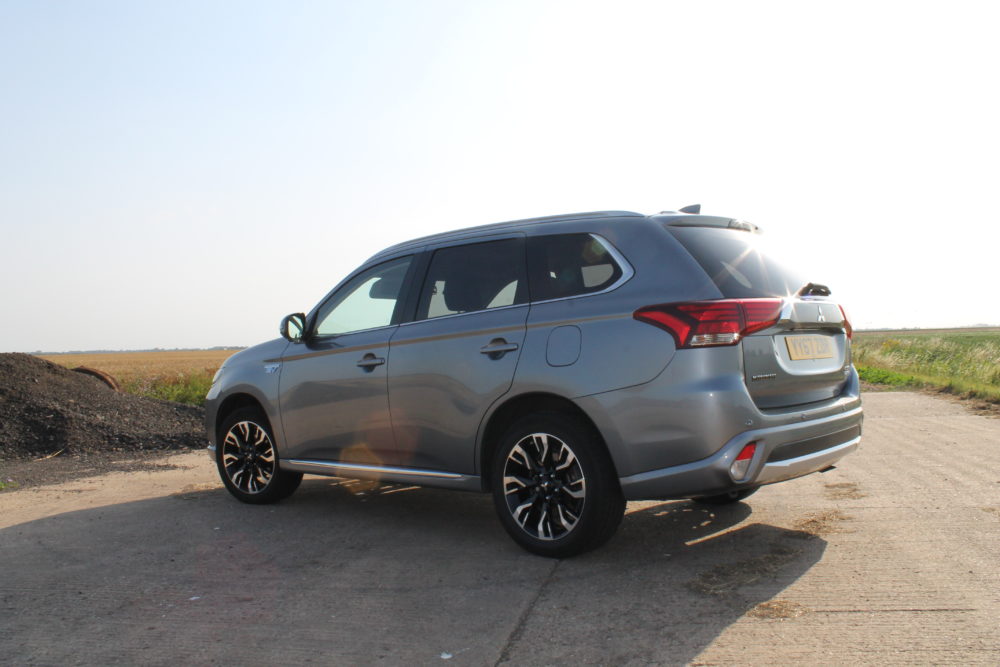

Final verdict
Just from reading the review you can probably tell my judgement is slightly clouded by the fact this is my first PHEV. I was bound to enjoy driving it due to the fact that it’s something new, my beginning into a journey from petrol/diesel to electric.
But I do genuinely believe it’s a good car. Would I pick it over similar options at the same price? Maybe not – purely because I like cars with a unique exterior that turns heads.
The exterior aside, the Outlander PHEV is a great option for many people looking for a reliable, well-equipped and fun-to-drive SUV.
Does the Outlander Phev come with a charging cable?
Unfortunately, no – it does not. A bit like car mats, when purchasing a brand new car you’re not always guaranteed to get an EV charging cable too. And, if you’re buying used it’s unlikely the previous owner would be willing to give it up. If you need a cable for your Outlander, you can purchase one from below.
